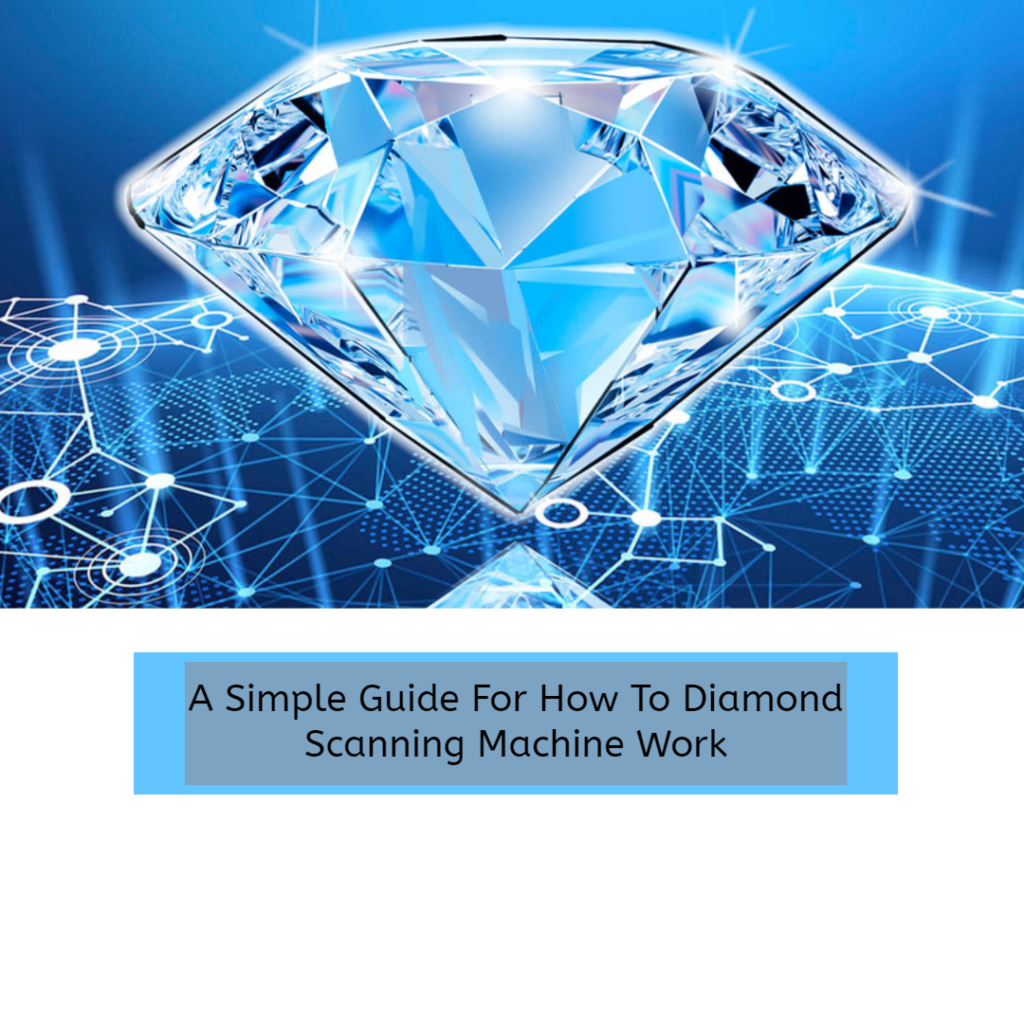Scanning diamonds has never been easier, thanks to modern technology and developments in the diamond trade. Diamond scanners have advanced so much over the years that it?s easy to forget how far they?ve come! This guide will help you understand how diamond scanning machine work and how to use them in your business today. By the end of this guide, you should be able to scan any type of diamond accurately and efficiently!

What Is A Diamond Scanner?
Some diamonds have flaws that can only be seen under magnification, so it?s important to examine your diamond?s clarity. This is why a Diamond scanner is essential for inspecting your purchase: it magnifies a diamond and can detect any imperfections or inclusions that might affect its value or appearance. Here are how they work and some things you should know before buying one…A diamond scanning machine works by holding an inverted lens (with magnification ranging from 20x-120x) over your diamond.?
As shown in the diagram below, light enters through two lenses at an angle. The diamond sits on top of these lenses and when you turn on the machine, they spin around while measuring refraction. If there are any inclusions inside of your diamond, the light will not pass through them as easily as it would with a flawless diamond, which will appear black on-screen when scanned with a diamond scanner. Your Diamond scanning Machine can also show you if there are diamonds inside of other diamonds! It does so by spinning those smaller diamonds until their refraction lines up with each other inside of your larger diamond; which is pretty cool!
What Does It Do?
Diamond scanning is a process that takes place during diamond manufacturing to locate flaws, contaminants and impurities. Diamond scanning machine use equipment like X-ray fluorescence analyzers and microscopic machines to identify defects. The resulting data is sent to a computer for analysis by industry experts. What’s more, these diamonds can be sold for far less than their market value if they pass. So how does it work? Follow along!
Diamonds are expensive because of their rare material characteristics?they?re among nature?s hardest minerals. To get them out of the ground, diamonds have to go through an extensive mining process involving multiple diamond cutting tools or one of many types of diamond scanning machine. Once dug up, diamond scanning blog move onto manufacturers who perform a variety of processes to create end products such as earrings and necklaces. Some types of diamonds require additional inspection before they can be considered ready for sale at retail stores.
Types Of Scanners.
Diamond scanning machine come in different sizes, depending on whether you?re using them for jewelry manufacturing or gemological purposes. If you need to make sure your diamond is actually a diamond and not some lesser imitation, then you?ll need a lot more power than if you?re just checking that it?s shaped correctly before getting set into a ring. There are handheld scanners which retail at around $100 and can be used to check loose diamonds; they use reflected laser light and don’t require contact with your jewel to generate an image. For loose diamonds, these will suffice, but any gems you plan on cutting need something more powerful. Some can even handle industrial-sized stones up to 200mm (about 8 inches) long!
Where To Use Them?
What’s so awesome about diamond scanning machine is that they are portable. The machine can be wheeled into a building, construction site or wherever one might be needed to keep workers safe. After all, what good is it having them there if you don’t use them when you need them? With some scanners being light enough to travel easily by hand or with one person carrying a large portable scanner on their shoulder, it’s very simple to get yours onsite and use it right away. Some diamond-scanning blogs can be carried around, but are so powerful they’re used in many different industries like the food industry and toys industry. Diamond making process requires several steps to make diamonds out of various raw materials. These diamond-making processes include melting, dissolving, refining and recrystallizing a variety of materials including graphite ore and silicon carbide ore. Diamond scanning machine come in handy during these stages because they allow for quality control of your final product as well as ensure that no precious material has been wasted during production.
When working with raw materials like graphite ore and silicon carbide ore which contain impurities such as dirt, rocks or metals that would not be suitable for creating diamonds; it is important to remove these unwanted materials from your product before creating diamonds out of it.
Costs
There are two main costs to consider when purchasing a diamond scanning machine: First, there is the cost of purchasing and shipping. Shipping fees vary depending on whether you choose express shipping or regular shipping, and where you live. Additionally, if you purchase online and do not pick up your scanner in person, there will be an additional fee for someone to come out to your location. The second main cost of buying a diamond scanning machine is installation fees. Although most scanners can be used without professional assistance during use, it is often beneficial to have someone with experience installing these machines as some people may encounter difficulties that are easily remedied by an experienced individual. Companies like Diamond Planet will provide installation services once your machine has been purchased at no extra charge.

As the editor of the blog, She curate insightful content that sparks curiosity and fosters learning. With a passion for storytelling and a keen eye for detail, she strive to bring diverse perspectives and engaging narratives to readers, ensuring every piece informs, inspires, and enriches.









